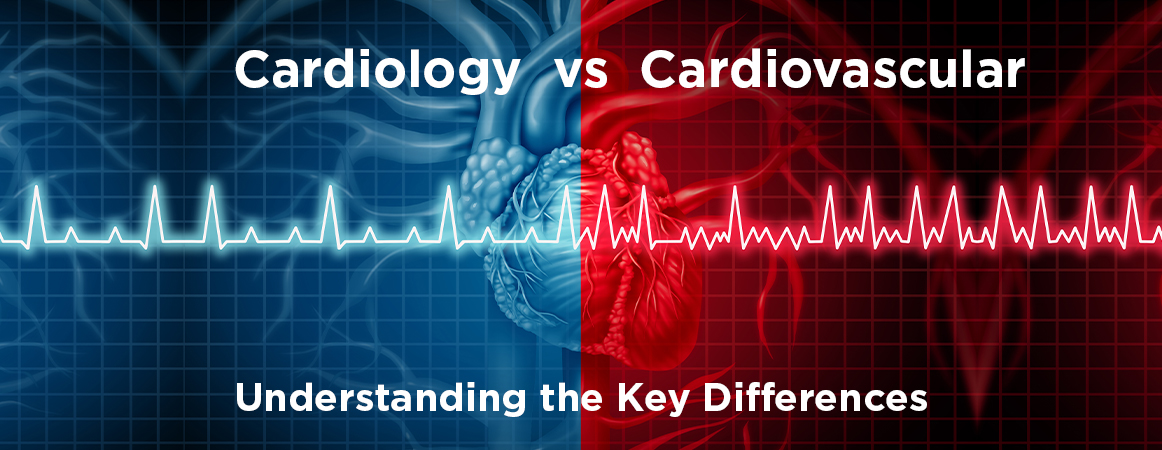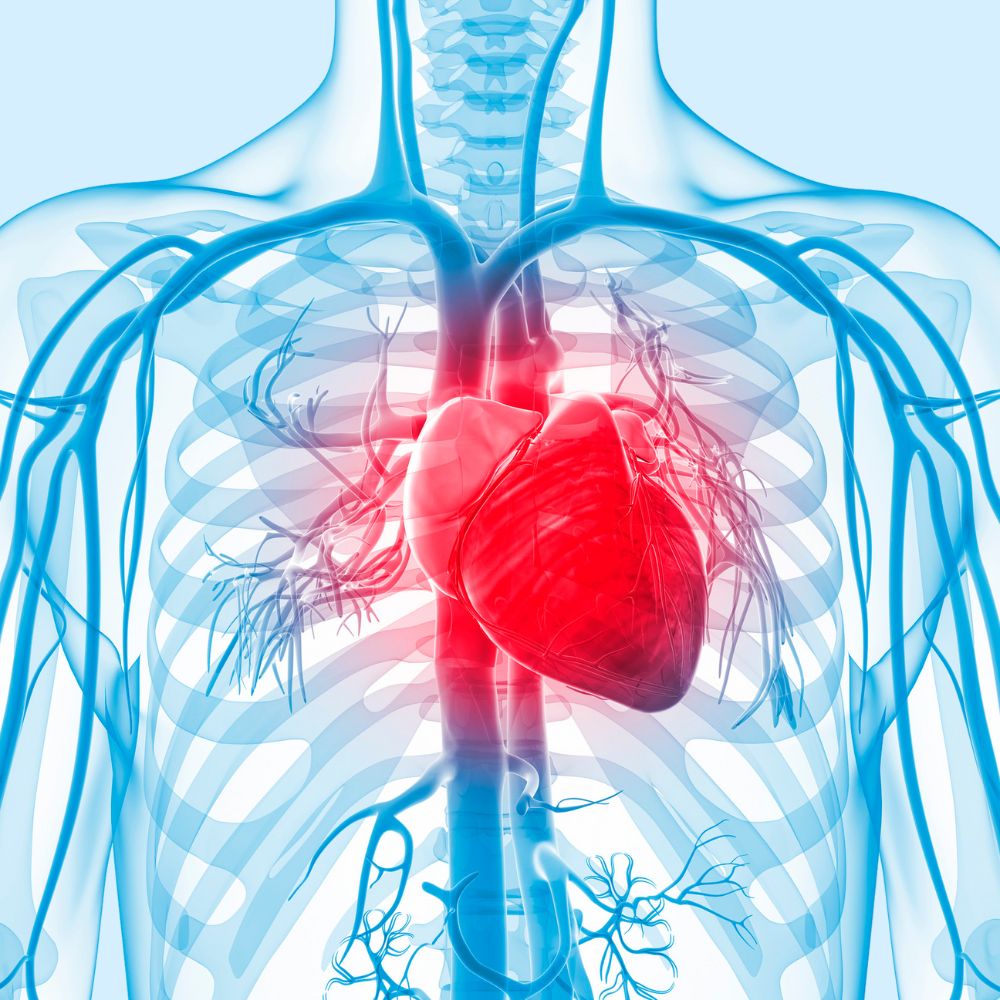Cardiology basics: What your heart doctor actually handles
Wiki Article
Understanding the Value of Cardiology in Modern Medical Care Providers
Cardiology plays a critical role in modern healthcare, especially as cardiovascular disease remains to be the leading reason for mortality worldwide. Developments in diagnostics and therapy have transformed client treatment, enabling earlier interventions and boosted end results. In addition, the change in the direction of preventative cardiology empowers individuals to manage their wellness proactively. As innovation remains to progress, the combination of cutting-edge remedies may additionally redefine cardiology's effect on public health and wellness, triggering a closer assessment of arising trends and their implications.The Frequency of Cardiovascular Disease and Its Effect on Public Health
Although heart problem continues to be the leading cause of fatality internationally, its effect extends much beyond specific clients to affect public wellness systems and economic climates. The high occurrence of heart disease places a substantial pressure on healthcare sources, necessitating raised funding for prevention, recovery, and treatment programs. Public health and wellness campaigns should attend to risk elements such as excessive weight, cigarette smoking, and less active lifestyles, which add greatly to the increasing occurrence of heart conditions.Moreover, the financial worry connected with heart problem is enormous, incorporating not only direct medical prices but additionally indirect expenditures related to lost efficiency and early death. Neighborhoods encounter difficulties in handling these prices, often resulting in variations in medical care accessibility and end results. As the population ages and lifestyle-related threats proceed to escalate, the urgency for reliable cardiology interventions ends up being critical. Subsequently, resolving heart problem is not just an issue of private wellness but also an important public wellness concern.Breakthroughs in Cardiac Diagnostics and Imaging Techniques
Current developments in heart diagnostics and imaging techniques have reinvented the area of cardiology, boosting the capacity to discover and monitor cardiovascular disease. Techniques such as heart MRI, CT angiography, and echocardiography have actually come to be significantly innovative, offering in-depth photos of heart frameworks and functions. These methods permit the very early recognition of conditions like coronary artery disease, heart failing, and valvular disorders.Moreover, developments in non-invasive diagnostics, such as wearable technology and remote tracking tools, have actually equipped individuals and health care service providers. These tools facilitate real-time monitoring of heart rhythms and other important indicators, causing timely treatments. Additionally, man-made intelligence is being integrated into imaging analysis, boosting precision and effectiveness in medical diagnosis.Innovations in Treatment Options for Heart Issues
Current advancements in cardiology have actually brought about substantial advancements in therapy options for heart disease. These consist of sophisticated medical methods that boost procedural outcomes and arising medicines that use new opportunities for therapy. As the area evolves, these technologies play an important function in enhancing person treatment and results.Advanced Surgical Techniques
Innovations in surgical methods have transformed the landscape of cardiology, providing brand-new hope for clients with heart conditions. Minimally invasive treatments, such as catheter-based treatments, have actually significantly lowered recovery times and healthcare facility keeps. Techniques like robotic-assisted surgery improve precision, allowing specialists to browse intricate physiological frameworks with better precision. Innovations in imaging modern technology facilitate real-time visualization during treatments, boosting end results. Transcatheter aortic shutoff substitute (TAVR) exhibits an advancement in treating aortic stenosis, enabling valve substitute without open-heart surgical procedure. In addition, hybrid strategies that incorporate catheter-based and surgical techniques supply tailored services for various heart concerns. These advanced surgical strategies not just improve client safety but additionally expand treatment alternatives, emphasizing the important function of development in modern cardiology techniques.Emerging Therapies and medicines
As the landscape of cardiology remains to advance, arising treatments and medicines play a pivotal duty in boosting treatment choices for heart conditions. Advancements such as novel anticoagulants and progressed lipid-lowering agents have actually transformed the management of cardiovascular illness, substantially decreasing client morbidity and mortality. Additionally, the advancement of gene treatments and regenerative medication uses appealing avenues for dealing with conditions previously deemed incurable. Clinical trials are consistently revealing the efficiency of these therapies, pressing the boundaries of traditional therapies. In addition, the assimilation of digital health technologies promotes individualized medicine, permitting tailored treatment plans based on hereditary and lifestyle factors. Collectively, these developments highlight the vibrant nature of cardiology, enhancing individual end results and redefining standards of care in modern-day health care.The Duty of Preventive Cardiology in Patient Care
Precautionary cardiology plays an essential role in individual care by concentrating on the identification of threat elements that contribute to cardiovascular disease. With way of life modification methods and early detection strategies, health care suppliers can effectively minimize the incidence of cardiovascular occasions - Cardiologist near me. This proactive method not just improves patient end results but additionally promotes long-lasting healthThreat Aspect Identification
While cardiovascular conditions stay a leading source of morbidity and mortality worldwide, reliable danger aspect identification acts as a cornerstone of precautionary cardiology. Recognizing threat aspects such as hypertension, diabetes, hyperlipidemia, and family members history is necessary for early intervention. Health care professionals make use of different screening approaches to review these factors, permitting for tailored safety nets. Furthermore, comprehending a person's way of living choices, such as smoking cigarettes and physical lack of exercise, better educates danger evaluations. This complete assessment allows clinicians to develop tailored treatment strategies targeted at mitigating risks. By prioritizing threat element recognition, health care systems can improve patient results and reduce the total problem of cardiovascular conditions, ultimately adding to enhanced public health and wellness approaches and resource appropriation.Way Of Living Modification Strategies
A wide range of research studies highlights the crucial role of way of living alteration approaches in minimizing heart disease risk. These methods include nutritional adjustments, boosted physical activity, smoking cessation, and weight management. By embracing a heart-healthy diet plan rich in fruits, veggies, entire grains, and lean proteins, people can lower cholesterol levels and high blood pressure. Routine physical task enhances the heart and improves overall cardio health. Furthermore, giving up smoking greatly reduces the threat of heart problem and boosts recuperation rates for those with status quo. Weight management further adds to cardio wellness by mitigating various other threat variables such as diabetes mellitus and high blood pressure. Carrying out these way of living alters not just promotes private wellness yet likewise functions as a foundation of preventative cardiology in individual care.Very Early Discovery Strategies
Way of life adjustments greatly add to reducing cardiovascular condition threats, yet they are most reliable when coupled with early detection strategies. Preventative cardiology highlights the importance of identifying prospective heart issues before they rise right into significant problems. Techniques such as blood pressure monitoring, cholesterol screening, and advanced imaging technologies like echocardiograms play vital functions in assessing cardiovascular wellness. Biomarkers and genetic testing additionally enhance the precision of very early discovery, permitting tailored preventative strategies. Normal heart threat examinations encourage medical care providers to step in proactively, possibly stopping cardiac arrest visit the site and strokes (Cardiology). By integrating these early discovery techniques right into regular care, individuals can take advantage of timely way of living interventions and targeted therapies, eventually enhancing outcomes and enhancing lifestyleIntegrating Innovation Into Cardiology Practices
As advancements in technology proceed to improve various fields, the assimilation of cutting-edge devices and systems into cardiology methods has come to be necessary for boosting patient treatment and results. Telemedicine systems allow cardiologists to monitor individuals remotely, boosting accessibility to care while reducing the problem on medical care facilities. Wearable gadgets, such as smartwatches, allow continuous heart price tracking, informing both physicians and patients to potential issues in real-time. Furthermore, expert system (AI) is being utilized to examine vast quantities of cardiac data, helping in early medical diagnosis and individualized therapy plans. Advanced imaging methods, consisting of 3D echocardiography, enhance visualization of heart structures, resulting in extra precise treatments. Electronic health documents (EHRs) streamline client info administration, ensuring that cardiologists have instant access to vital data. Together, these technological advancements are changing cardiology, promoting aggressive monitoring and enhanced health and wellness outcomes for individuals with cardio problems.The Importance of Person Education And Learning and Interaction
Client education and learning and engagement play an essential function in the monitoring of cardio health and wellness. By gearing up people with knowledge concerning their problems, treatment choices, and way of life changes, healthcare carriers equip individuals to take an active role in their care. This proactive approach can lead to improved adherence to suggested medications, nutritional adjustments, and exercise regimens, eventually decreasing the danger of complications.Engagement also promotes a strong patient-provider connection, motivating open communication and count on. When individuals really feel notified and included, they are more probable to voice issues and ask concerns, which can bring about far better professional results. Additionally, educational resources, such as workshops or digital platforms, can improve understanding and promote self-management approaches. In general, prioritizing client education and interaction is crucial for improving cardio health and wellness, enhancing quality of life, and minimizing health care costs connected with cardio illness.Future Patterns in Cardiology and Their Potential Influence

Regularly Asked Inquiries
What Way Of Living Adjustments Can Minimize Heart Disease Threat?
The existing question addresses lifestyle modifications that can significantly lower heart disease danger. Cardiology. Embracing a balanced diet regimen, participating in normal physical activity, preserving a healthy weight, managing stress and anxiety, and avoiding cigarette can especially improve cardio healthJust How Can I Recognize Early Indicators of Heart Troubles?
Recognizing early indicators of heart troubles entails surveillance symptoms such as breast pain, shortness of breath, fatigue, and irregular heartbeat. Timely understanding of these indicators can trigger needed medical assessment and intervention for much better end results.What Are the Differences Between Cardiologists and Cardiac Surgeons?
The distinctions in between cardiologists and cardiac surgeons depend on their duties; cardiologists mainly diagnose and handle heart disease through non-invasive methods, while cardiac cosmetic surgeons carry out surgical treatments to remedy structural heart concerns. Each plays a crucial, unique role.
Just how Often Should I Get My Heart Health And Wellness Checked?
The frequency of heart medical examination differs based on private threat variables. Normally, adults should go through examinations every one to 2 years, while those with existing conditions may require even more constant assessments as suggested by health care experts.What Duty Does Genetics Play in Heart Illness Threat?
Genetics substantially influences heart condition risk, with familial patterns showing acquired conditions. Details genetics can predispose people to high blood pressure, cholesterol concerns, and various other cardio troubles, highlighting the relevance of hereditary testing in evaluating heart wellness. Heart disease stays the leading cause of death globally, its effect expands far past individual clients to influence public health systems and economic climates. Public health efforts have to deal with threat variables such as excessive weight, cigarette smoking, and inactive lifestyles, which contribute substantially to the increasing occurrence of heart conditions.Moreover, the financial concern connected with heart condition is immense, encompassing not just straight medical expenses yet likewise indirect expenditures related to lost efficiency and early death. Preventative cardiology plays a vital function in individual treatment by concentrating on the identification of risk factors that contribute to heart illness. Synthetic knowledge (AI) and equipment understanding are enhancing diagnostics and patient tracking, enabling early discovery of heart conditions. The distinctions between cardiologists and cardiac specialists lie in their roles; cardiologists primarily detect and manage heart problems through non-invasive techniques, while cardiac surgeons perform medical treatments to remedy architectural heart concerns.Report this wiki page